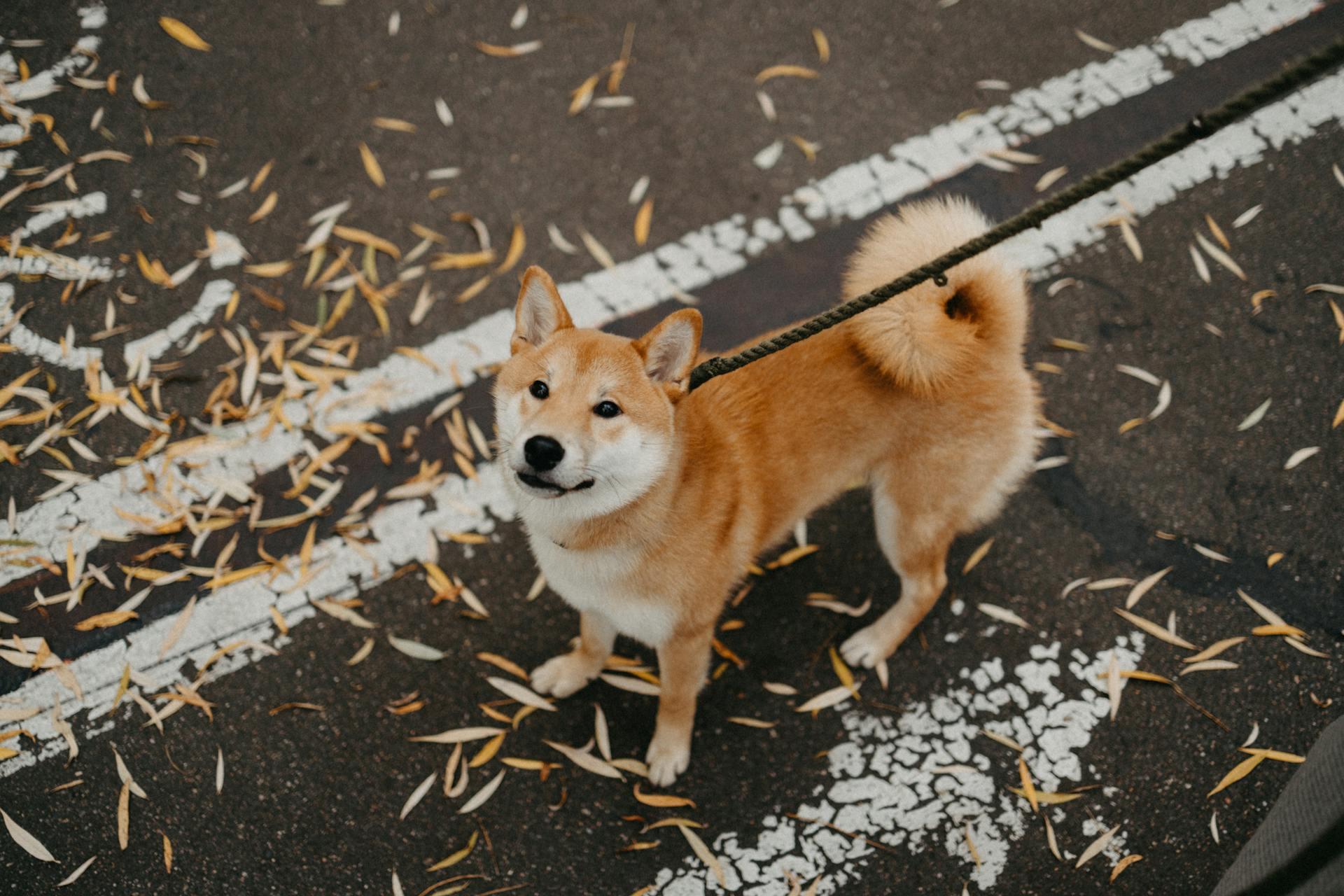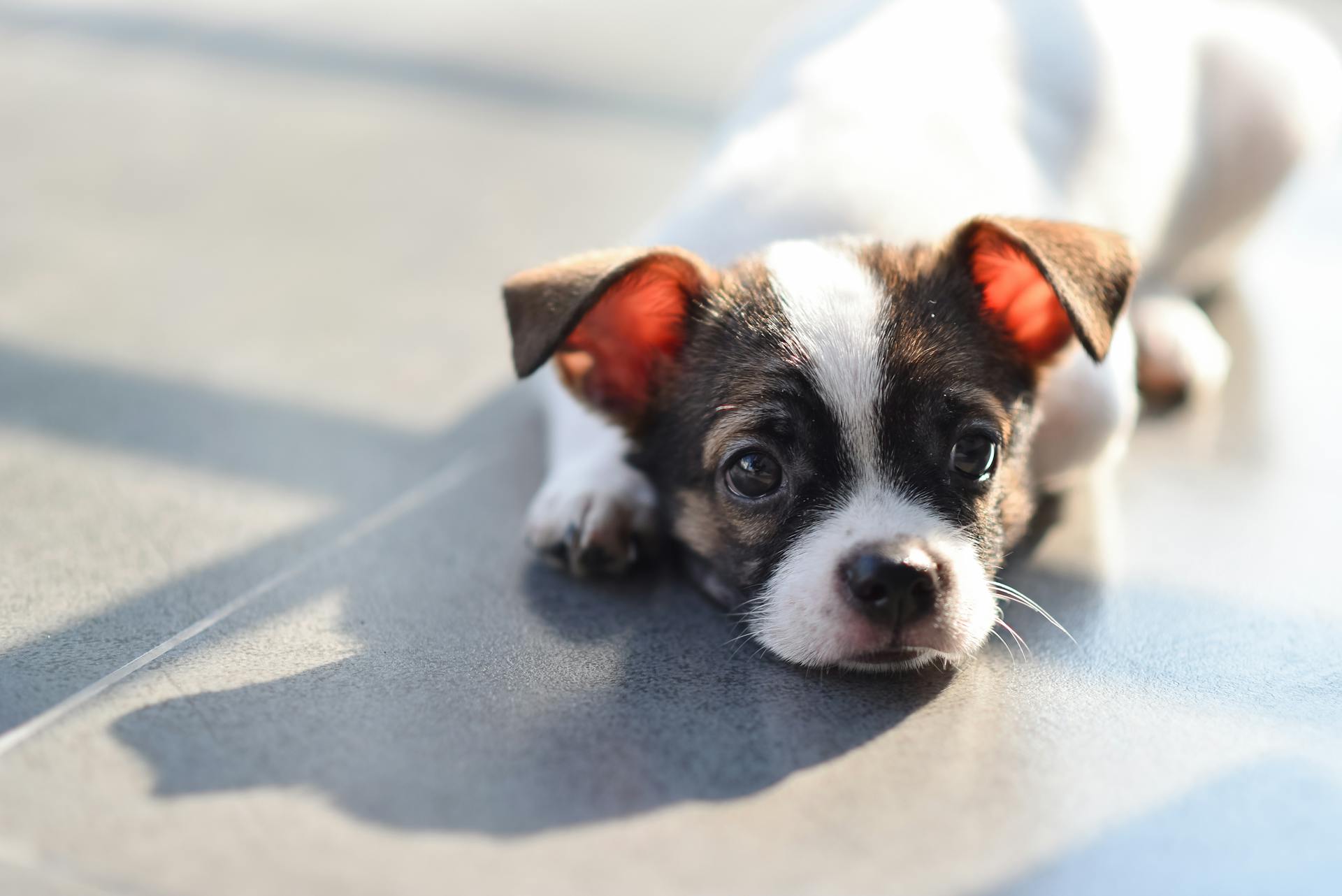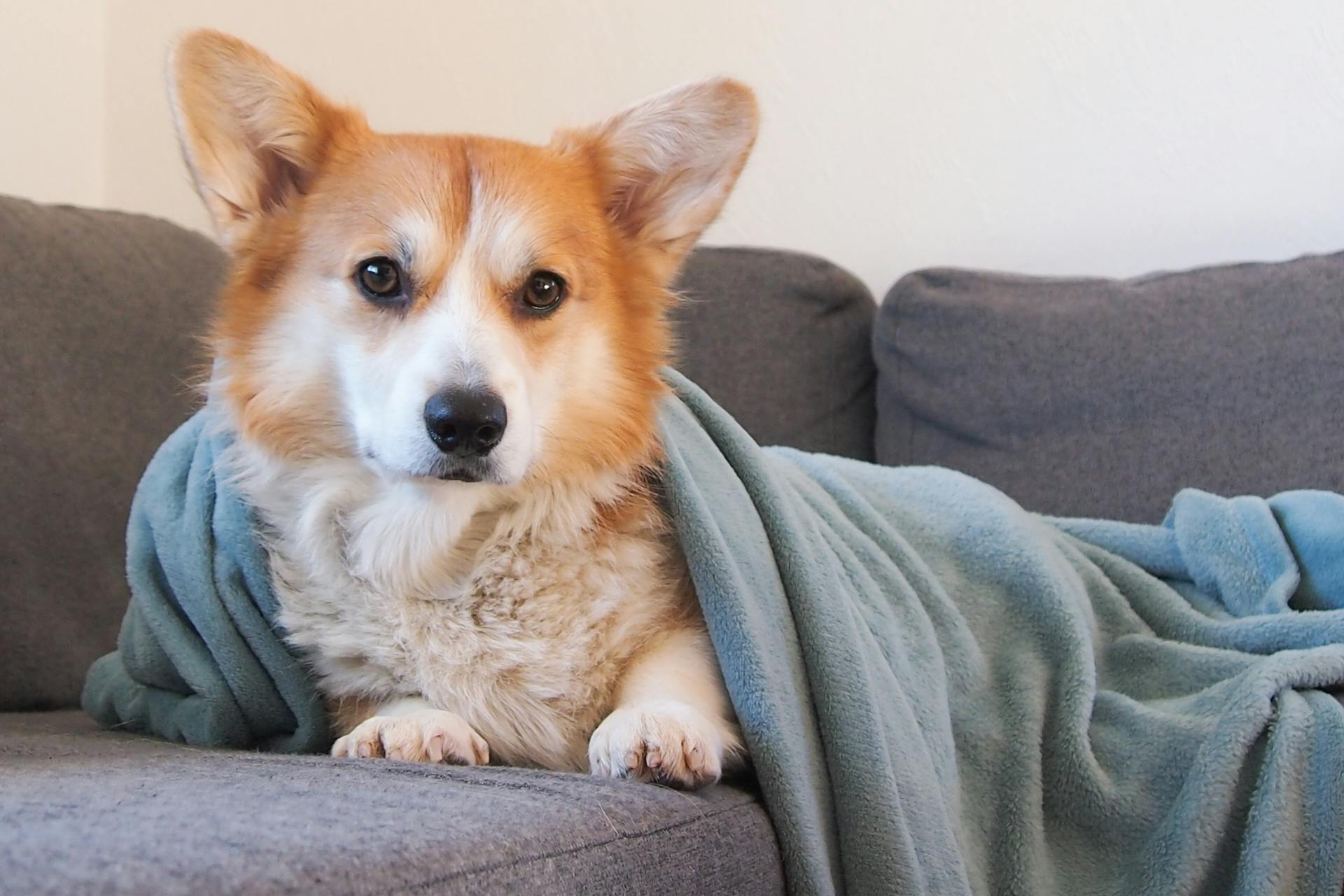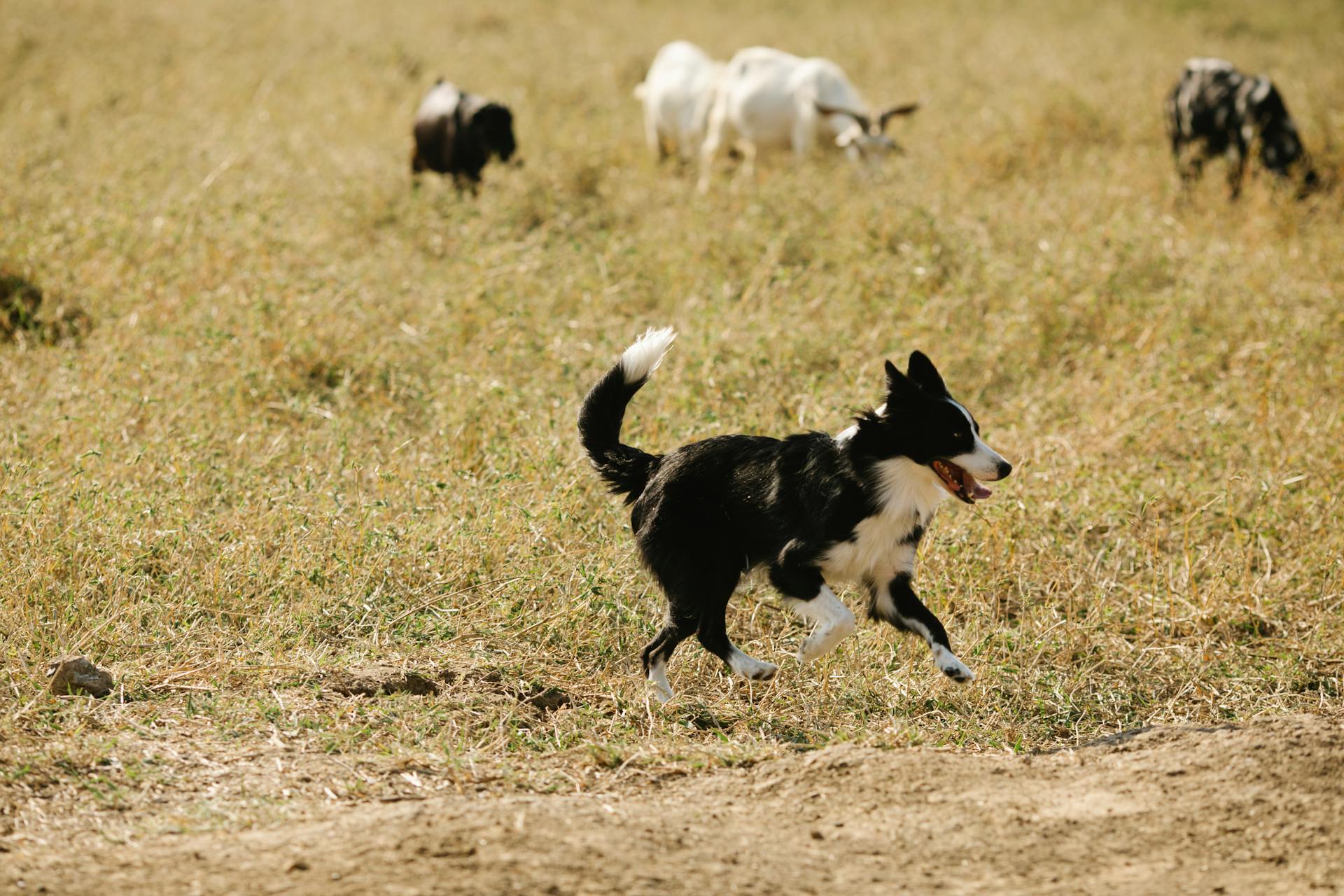
Collies were originally bred to herd sheep and other livestock in Scotland and England. They were valued for their intelligence, agility, and strong herding instincts.
Their early breeders wanted a dog that could quickly gather and move a large number of animals, which is why they developed the Collie's unique herding style.
Collies were also used to guard sheep against predators, and their keen senses and strong instincts made them well-suited for this task.
Today, Collies are still used for herding, but many are also kept as beloved pets.
Breed Origins
The Border Collie breed has its roots in the rugged Scottish landscape, where they were used to herd sheep and other livestock for centuries. The ancestors of today's Border Collie were Scottish Collies, or Colleys, that were working flocks in the craggy and rugged Scottish landscape.
Their herding abilities were more important than their appearance, and they came in a variety of coat colors, including tri-color, red and white, and brown and white. The value and importance of farmers, crofters, and shepherds owning good working dogs in Scotland is summed up beautifully in the words written by James Hogg in 1824.
Take a look at this: Rough Collie Sable and White
Old Hemp, considered the "Father of the Border Collie breed", was born in 1893 in Cambo, Northumberland, and was a 'rough-coated', tri-color herding dog. His parents were a black sheepdog named Meg and a tri-colored herding dog, Roy, and he inherited all the best traits from each of his parents.
The type of shepherd's dog that became the modern-day Border Collie were most common in the areas surrounding the English/Scottish border, often called the Borderlands, hence the breed name. The early Collies in the Border Collie ancestry came in a variety of coat colors, including tri-color, red and white, and brown and white.
In 1873, the earliest sheepdog trials that included participants from across Britain were held in Bala, Wales, and it was a Scottish herding dog who took first place. The ancestors of today's Border Collie fit the bill, and as the recognized Border Collie breed has been shaped and honed for looks and ability, they have become one of the most dedicated, successful and popular herding dogs of our time.
The International Sheep Dog Society was founded in 1906, and Old Hemp's name was added to the stud book and is shown as entry #9. The natural aptitude and unique style that Old Hemp showed when working the sheep excited his owner, Adam Telfer, who had owned and worked with herding dogs his whole life.
Suggestion: What Are Boxer Dogs Bred for
History of the Breed
The Border Collie breed has a rich history that dates back to the 16th century, with early written records mentioning herding dogs who worked flawlessly in response to their owner's voice and whistle.
The ancestors of today's Border Collies were Scottish Collies, herding dogs that worked flocks in the rugged Scottish landscape for centuries. They came in a variety of coat colors, including tri-color, red and white, and brown and white.
The type of shepherd's dog that became the modern-day Border Collie was most common in the areas surrounding the English/Scottish border, hence the breed name. These dogs were highly valued for their herding abilities and were often used to manage large flocks.
Old Hemp, a 'rough-coated', tri-color herding dog born in 1893, is considered the 'Father of the Border Collie breed' due to his incredible herding abilities and unique style. He was said to have flashed like a meteor across the sheepdog horizon, and his name was added to the stud book of the International Sheep Dog Society.
Recommended read: Border Collie Lassie Dog
The ancestors of today's Border Collies were introduced to the British Isles by Roman conquerors, and were later saved from obscurity by Queen Victoria in 1860. They were first displayed at a dog show in the "Scotch Sheep-dogs" category in 1860 in Birmingham, England.
In the late 19th century, sheepdog trials were held across Britain, with the first recorded display of the unique Border Collie herding style occurring in 1883. This style, characterized by a low-key approach to controlling the sheepdog, has become a hallmark of the breed.
The earliest sheepdog trials, held in Bala, Wales in 1873, featured a Scottish herding dog that took first place. This demonstrates the long history of herding dogs in Scotland and their importance in managing large flocks.
Check this out: Good Names for Border Collies
Today's Border
Today's Border Collie is still bred for its impressive herding abilities. They're a natural fit for farms and ranches with uneven terrain.
Their surefootedness and agility come in handy on rocky and harsh land. They can handle considerable distances with ease.
Their boundless energy and considerable stamina make them perfect for long days of herding. They're also highly intelligent and responsive to human direction.
In fact, the earliest sheepdog trials were held in Bala, Wales, in 1873, and a Scottish herder took first place. The Border Collie's unique herding style was first recorded in 1883.
Background Information
Collies were originally found in the Highland Regions of Scotland, where they were bred for their herding ability, not their appearance. They varied greatly in looks back then, but were predominantly black.
These early Collies were brought to Southern England by nomads in the Stone Age, where they became tough and intelligent dogs used for herding sheep, pigs, goats, and cattle. Their ancestors were introduced to the British Isles by Roman conquerors around 2,000 years ago.
Collies were saved from obscurity by Queen Victoria in 1860, when she brought some to England after seeing them in Scotland.
Background
The Border Collie breed has its roots in the Highland Regions of Scotland, where they were first found. They were initially valued for their herding ability rather than their appearance.
Old Hemp, considered the 'Father of the Border Collie breed', was born in 1893 in Cambo, Northumberland, Northern England. He was a 'rough-coated', tri-color herding dog with incredible herding abilities.
Collies were brought to Southern England by nomads in the Stone Age, where they became tough and intelligent dogs used for herding various animals. They were later introduced to the British Isles by Roman conquerors around 2,000 years ago.
Old Hemp's owner, Adam Telfer, was a farmer and shepherd who had owned and worked with herding dogs his whole life. He was impressed by Old Hemp's natural aptitude and unique style when working the sheep.
The International Sheep Dog Society was founded in 1906, and Old Hemp's name was added to the stud book as entry #9. He is believed to have fathered as many as 200 puppies in his lifetime.
Collies were first displayed at a dog show in the "Scotch Sheep-dogs" category in 1860 in Birmingham, England.
A unique perspective: Border Collie Dog Agility
Similarly Sized Breeds
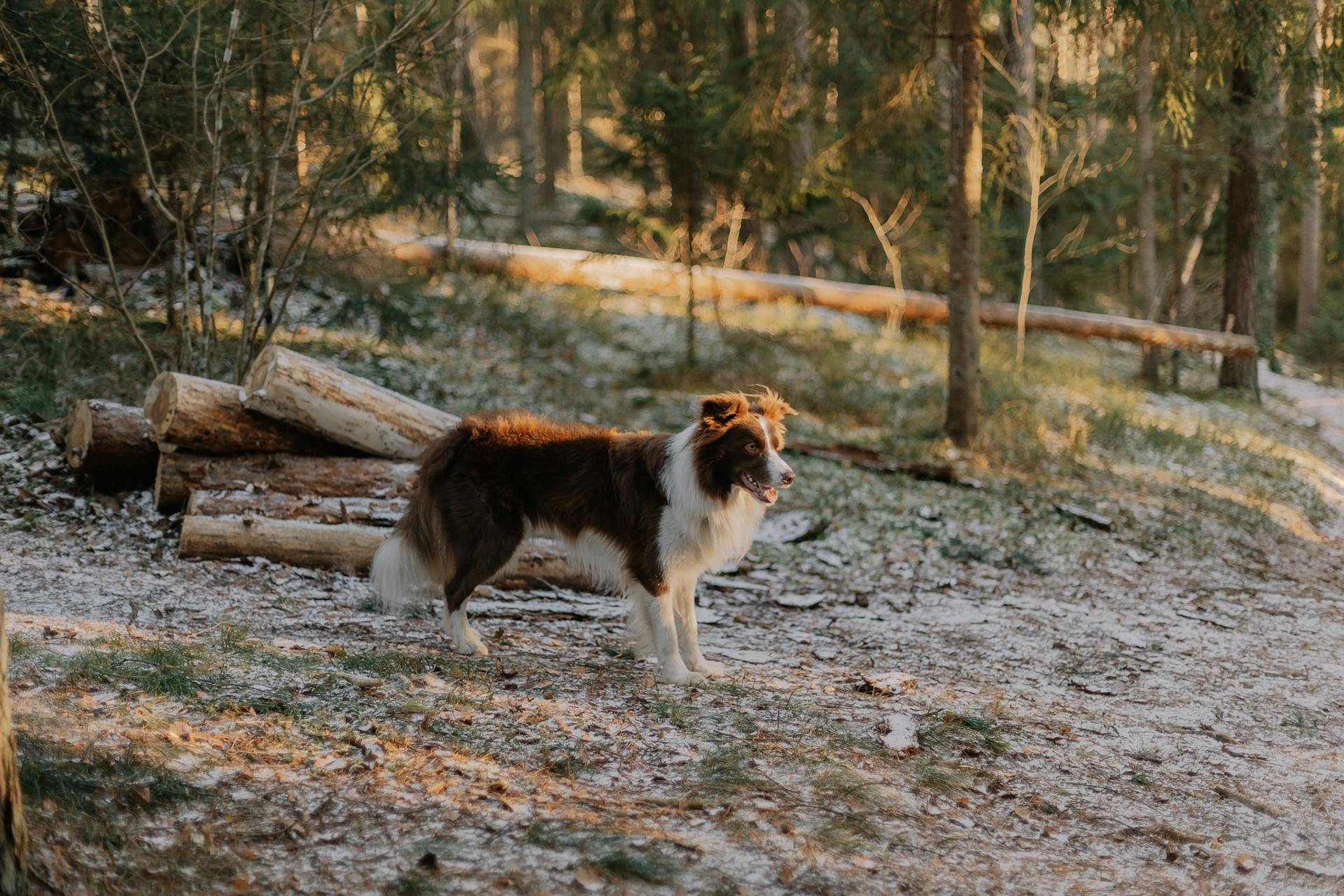
If you're considering getting a Collie, you might be wondering about other breeds that are similarly sized. The Golden Boxer, for instance, is about 98% similar in size to a Collie.
The Huskita is another breed that's nearly identical in size to a Collie, with a 98% similarity in their physical characteristics. This means they'll likely require similar living arrangements and exercise needs.
Pointer Bay and Bluetick Coonhound are both breeds that are also about 98% similar in size to a Collie. This is worth considering if you're looking for a breed that's easy to manage in terms of space and exercise needs.
Cesky Fousek is yet another breed that's nearly identical in size to a Collie, with a 98% similarity in their physical characteristics. This means they'll likely require similar living arrangements and exercise needs.
Here are some breeds that are similarly sized to Collies:
- Golden Boxer (98% similar)
- Huskita (98% similar)
- Pointer Bay (98% similar)
- Bluetick Coonhound (98% similar)
- Cesky Fousek (98% similar)
The Future of the Breed
The Future of the Breed is a topic that's close to my heart, as I've had the privilege of working with Border Collies for many years. The breed has evolved over hundreds of years, with its name being acquired just over 100 years ago.
Border Collies were originally bred for their strong herding instinct and intelligence, which is still prized by shepherds today. This focus on herding ability has led to the development of different "types" within the breed, with some dogs excelling in specific areas.
Agility competitors, on the other hand, favor smaller, faster dogs with exceptional agility. As a result, the average size of Border Collies among this group may decrease over time.
Featured Images: pexels.com
